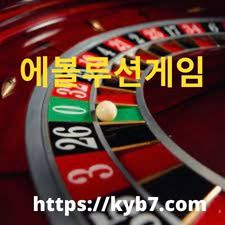roulette
roulette
roulette, (from French: "little wheel"), betting game in which players bet on which red or dark numbered compartment of a rotating wheel a little ball (turned the other way) will stop inside. Wagers are put on a table set apart to relate with the compartments of the wheel. It is played in club around the world. Roulette is a financial game, and all wagers카지노사이트 추천 are put against the bank-that is, the house, or the owner of the game. As a hotshot wagering game, it has had its fame supplanted in the United States and the Caribbean islands by others, outstandingly craps, blackjack, and poker.
Whimsical tales about the beginning of roulette incorporate its development by the seventeenth century French mathematician Blaise Pascal, by a French priest, and by the Chinese, from whom it was as far as anyone knows communicated to France by Dominican priests. In actuality, roulette was determined in France in the mid eighteenth century from the more established games hoca and portique, and it is first referenced under its present name in 1716 in Bordeaux. Following a few adjustments, roulette accomplished its current format and wheel structure around 1790, after which it quickly acquired status as the main game in the club and betting places of Europe. During the years 1836 to 1933, roulette was restricted in France.
Gear
The roulette table is made out of two areas, the actual wheel and the wagering format, also called the roulette design. There are two styles of roulette tables. One has a solitary wagering design with the roulette wheel toward one side, and different has two formats with the wheel in the middle. The wheel turns evenly.온라인카지노
Heading the format plan, which is imprinted on green baize, is a space containing the figure 0 (European style) or the figures 0 and 00 (American style, albeit such wheels were utilized additionally in Europe during the eighteenth and nineteenth hundreds of years). The primary piece of the plan is made out of 36 continuously numbered rectangular spaces, on the other hand hued red and dark and organized in three segments of 12 spaces each, starting with 1 at the top and finishing up with 36 at the base. Straightforwardly beneath the numbers are three clear spaces (on certain formats these are checked "2 to 1" and are situated on the players' side of the table). On one or the other side of these or along one side of the segments are rectangular spaces checked "first 12," "second 12," and "third 12" on American-style formats. On European-style designs these terms are "12p" (première), "12m" (milieu), and "12d" (dernière douzaine). Six additional spaces are checked "red" (rouge), "dark" (noir), "even" (pair), "odd" (impede), "1-18" (low, or manque), and "19-36" (high, or old fashioned).
The roulette wheel comprises of a strong wooden plate marginally raised in shape. Around its edge are metal parts known as separators or worries, and the compartments or pockets between these are called kayaks by roulette croupiers. 36 of these compartments, painted on the other hand red and dark, are numbered nonconsecutively from 1 to 36. On European-style wheels a 37th compartment, painted green, conveys the sign 0, and on American wheels two green compartments on inverse sides of the wheel convey the signs 0 and 00. The wheel, its axle impeccably adjusted, turns flawlessly in a practically frictionless way.
The standard roulette table utilizes up to 10 arrangements of wheel checks (as a rule called chips). Each set is contrastingly hued; each generally comprises of 300 chips; and there is one set for every player. The chips generally have a solitary essential worth, albeit a few club additionally sell chips of lesser worth. The shade of the chips demonstrates the player, not the worth of the chips. Assuming a player wishes to purchase chips of somewhat higher worth, the croupier puts a marker demonstrating that worth on top of the table's heap of chips of the shading relating to the chips bought. Most club likewise have high-esteem chips that can be bet at any gaming table. Dissimilar to roulette chips, these have their numbered qualities imprinted on them.
Wagers
It is feasible to put down the accompanying wagers in roulette: (1) straight, or single-number (en plein), in which the chips are put solidly on one number of the format, including 0 (and furthermore 00 on American formats), with the goal that the chips don't contact any of the lines encasing the number; a triumphant single-number bet pays 35 to 1 (for every unit bet, a triumphant player accepts his unique bet and 35 matching units); (2) split, or 2-number (à cheval), in which the chips are put on any line isolating any two numbers; if either wins, result chances are 17 to 1; (3) road, or 3-number (transversale pleine), in which the chips are put outwardly line of the format, put everything on the line numbers inverse the chips; result chances on any of the three numbers are 11 to 1; (4) square, quarter, corner, or 4-number (en carré), in which the chips are put on the crossing point of the lines between any four numbers; result chances are 8 to 1; (5) line, or 6-number (sixaine or transversale six), in which the chips are put on the convergence of the sideline and a line between two "roads"; result chances are 5 to 1; (6) section (colonne), or 12-number, in which the chips are put on one of the three clear spaces (a few designs have three squares, checked "first," "second," and "third") at the lower part of the design, in this way put everything on the line numbers over the space; result chances are 2 to 1; (7) handfuls (douzaine), or 12-number, in which the chips are put on one of the spaces of the design stamped "12," put everything on the line 1-12, 13-24, or 25-36; result chances are 2 to 1; (8) low-number or big number, in which the chips are put on the format space stamped "1-18" (manque) or on the space stamped "19-36" (old fashioned); result is even cash; (9) dark or red, in which the chips are put on a space of the design stamped "dark" (noir) or on a space checked "red" (rouge; a few designs have a huge dark or red precious stone molded plan rather than the words); result is even cash; (10) odd-number or significantly number, in which the chips are put on the space of the format stamped "odd" (debilitate) or on the space stamped "even" (pair); result is even cash.
On formats with a solitary zero (European style), the 0 might be remembered for a 2-number bet with any abutting number, in a 3-number bet with 1 and 2 or with 2 and 3, and in a 4-number bet with 1, 2, and 3 at the standard chances for these wagers.먹튀검증 With the American-style 0 and 00, a 5-number line bet likewise is conceivable, the player putting his chips on the corner crossing point of the line isolating the 1, 2, 3 from the 0 and 00, with result chances of 6 to 1.
The play
The game starts when one of the croupiers (vendors) in participation requires the players to make their wagers, which they do by putting chips on the spaces of the format on any number, gathering, or characterization they trust will win.
The croupier as a rule begins the wheel turning in a counterclockwise course and afterward turns a little ivory or plastic ball onto the bowl's back track the other way. Players might keep on putting down wagers while the haggle are moving until the ball dials back and is going to drop off the back track, when one of the croupiers declares that no more wagers might be made.
At the point when the ball falls and stops between any two metal parts of the wheel, it denotes the triumphant number (or a 0 or 00), the triumphant shading, and some other allowed bet that relates to a triumphant number or image. The vendor quickly declares the triumphant number and its tone and puts an extraordinary marker on the comparing number on the design. He first gathers all losing wagers, not upsetting the chips that are laying on winning spaces, and afterward takes care of any triumphant wagers.
House chances
While utilizing the American-style wheel with the 0 and 00, the benefit ("vigorish") for the bank ascends to an additional a 2 sections in 38, or around 5.26 percent, all things considered. The main special case is the 5-number line bet, where the house advantage is around 7.89 percent.
Roulette as played in areas other than the United States and the Caribbean is something very similar aside from that the haggle contain just a solitary zero (0). This lessens the bank's benefit to around 2.7 percent. In certain gambling clubs when 0 shows up, all even-cash wagers red, dark, odd, even, high, low-are en jail ("detained"). On the following twist of the wheel, assuming 0 shows up once more, the house gathers half of each detained bet; if not, it gathers all losing wagers and returns the first wagers to any victors. With this standard the bank's benefit on even-cash wagers is decreased to around 1.35 percent.
Frameworks
Incalculable wagering frameworks have been formulated to beat the wheel. A large portion of these frameworks base on the even-cash wagers. Present day numerical hypothesis, as well as more than two centuries of useful playing, in any case, have decisively shown that it is difficult to beat roulette with any kind of wagering framework. Since the bank holds a benefit on any sort of wagered, over the long haul it doesn't make any difference how a player consolidates or shifts his wagers. By and by, most wagering frameworks reallocate the measures of the successes and misfortunes: an increment in the possibility winning is adjusted against a more noteworthy misfortune once it happens, as it will sometime. The most seasoned and most normal wagering framework is the martingale, or bending over, framework on even-cash wagers, in which wagers are multiplied continuously after every misfortune until a success happens. This framework most likely traces all the way back to the innovation of the roulette wheel. Two other notable frameworks, likewise founded on even-cash wagers, are the d'Alembert framework (in light of hypotheses of the French mathematician Jean Le Rond d'Alembert), in which the player expands his wagers by one unit after every misfortune except diminishes it by one unit after each success, and the Labouchere framework (contrived by the British government official Henry Du Pré Labouch




Mga Komento
Mag-post ng isang Komento